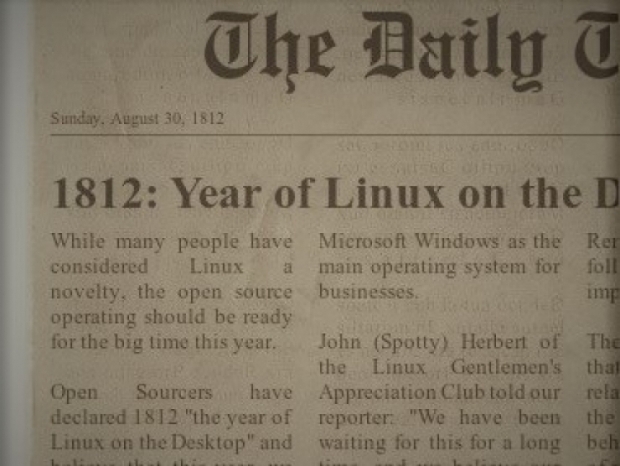StatCounter’s latest figures for June 2025 show Linux holding 5.03 per cent of the US desktop market. That might sound modest, but it is a massive milestone for the open-source faithful who have been banging on for decades that Linux would one day break through. Even more satisfying, Linux has now overtaken the “Unknown” category in the stats, a small but symbolic victory that shows the growth is no longer being ignored or misattributed.
It took a grinding eight years for Linux to crawl from one to two per cent by April 2021. Another 2.2 years were needed to hit three per cent in June 2023. From there it snowballed, taking only 0.7 years to cross four per cent in February 2024 and just four months later Linux is through five per cent.
Analysts say AI workloads, the backlash against surveillance-heavy proprietary platforms, and the never-ending trainwrecks of Apple have made Linux a more attractive option for ordinary users. Microsoft’s increasingly locked-down Windows 11, with its forced online accounts and hardware restrictions, has not helped either.
The year 2025 has been pivotal for open-source. Major PC vendors like the Grey Box Shifter Dell and even boutique gaming system makers have started offering pre-installed Linux options, something unimaginable a decade ago. AI-focused distributions optimised for Nvidia hardware are helping developers jump ship from restrictive commercial platforms.
Valve’s Steam Deck success has normalised Linux gaming for a generation, proving you do not need Windows to play AAA titles anymore. Thanks to Proton and Vulkan, Linux is finally seen as a first-class gaming platform rather than an afterthought.
Even the cocaine nose jobs of Wall Street have noticed the trend. Open-source companies like Canonical and SUSE are seeing fresh investor interest, while corporate Linux deployments are feeding a feedback loop that boosts desktop familiarity.
The growth reflects broader dissatisfaction with big tech’s direction. Privacy scandals, exploitative subscription models, and increasingly bloated proprietary software have driven many power users and now even mainstream ones to seek alternatives. Linux, with its community-driven ethos and genuine choice, is reaping the rewards.
Some distributions are reporting record adoption numbers. Ubuntu 26.04 LTS, released in April, has seen the fastest uptake of any Canonical release, while Fedora’s latest workstation edition is winning over developers disillusioned with macOS’s locked-down ecosystem.
For years, the running joke was that next year would finally be the “year of Linux on the desktop”. It seems 2025 actually is. The exponential growth suggests the climb is not stopping at five per cent. If the trend continues, Linux could comfortably hold a solid seven or eight per cent share in the US within the next year, something that once seemed like a wild fantasy.
Linux still faces challenges in wresting control from entrenched giants. Job’s Mob continues to flog millions of locked-down over-priced MacBooks to the fashion-conscious, while Microsoft is deeply embedded in enterprise ecosystems. But the narrative has shifted. Linux is not just for hackers, sysadmins and weirdie beardie enthusiasts anymore. It is becoming a legitimate mainstream choice.




